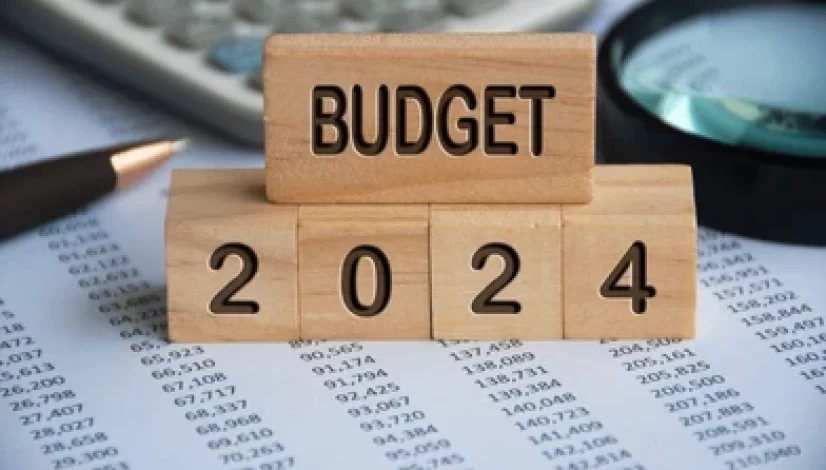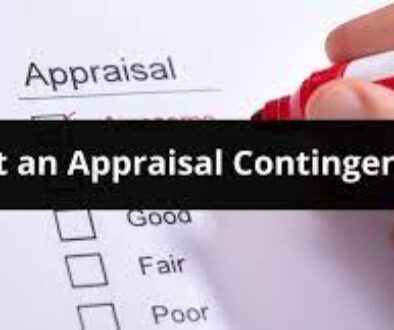Budget
How large of a mortgage loan you can qualify for depends on how much debt a lender thinks you can take on as a borrower. This will ultimately determine how much house you’re able to afford.
However, just because you’re approved for a certain amount doesn’t mean you should buy a house with that home price. Instead, you’ll want to take a close look at your financial health, including your household income and monthly expenses, and make sure to set a firm budget once you begin your home search.
Read on to calculate how much house you can afford and learn what this means for whether you should buy a house.
Home Affordability Calculator
Just enter your location, yearly income, monthly debts and how much money you have for a down payment and closing costs. The calculator will take this information and tell you how big of a loan you can safely take on.
On the flip side, if you have a price in mind, you can use a mortgage calculator to see how much cash you’ll need for a down payment and closing costs.
The 29/41 Rule For Home Affordability
When lenders evaluate your mortgage application, they calculate your debt to income.This is the sum of your monthly debt payments divided by your monthly gross income. Lenders look at this number to see how much additional debt you can take on.
According to the 29/41 rule, you should spend no more than 29% of your gross income on housing and no more than 41% of your gross income on the sum of all debt payments, housing included. We’ll see what that looks like in a moment, but let’s first discuss how to calculate your DTI.
How To Determine Your DTI
Mortgage lenders consider DTI an important qualifying factor when reviewing loan applications. The amount of debt you have is considered a very reliable predictor of the risk associated with approving any mortgage loan. Therefore, it’s important to know your numbers.
- Monthly rent or house payments (including property tax)
- Monthly child support payments or alimony
- Student loan payments
- Car payments
- Any other recurring debts you might have to pay such as credit card debt
You shouldn’t include:
- Grocery bills
- Utility bills
- Income and other related taxes
- Other optional bills such as subscriptions or those that vary month to month (excluding recurring debt)
Next, divide your total monthly debts by your monthly gross income. For example, let’s say your debt payments add up to $4,000 per month. If your monthly gross income (your before-tax income) is $8,000 per month, then your DTI is 0.5, or 50%.
Spend A Max Of 29% On Housing
The first number in the 29/41 rule, 29, represents your housing expense ratio. This is calculated by dividing your mortgage payment (principal, interest, real estate taxes, homeowners insurance and, if applicable, mortgage insurance and homeowners association dues) into your gross monthly income and converting it to a percentage.
Spend A Max Of 41% On Total Debt Payments
The 41 represents the maximum percentage of your income you should spend on all your debts, including revolving debt (credit cards and other lines of credit) and installment debt (mortgage, car payment, student loans and personal loans).
Gross Monthly Income
The 29/41 rule is important to know when thinking about your mortgage qualification because DTI helps lenders determine your ability to pay your mortgage. Although higher housing expenses and DTIs are allowed under many loan types (including conventional, USDA, VA and FHA LOANS)the 29/41 rule provides a good starting point. You need to calculate how much house you can afford while considering a wide range of loan options.
Make sure your mortgage payment (principal, interest, property taxes and homeowners insurance) is no more than 29% of your gross monthly income. Also make sure your total monthly debt (mortgage plus car loans, student debts, etc.) is no more than 41% of your gross monthly income.
Other Factors That Determine How Much Home You Can Afford
Although your DTI and housing expense ratios are important factors in mortgage qualification, other variables impact your monthly mortgage payment and how much you can afford.
Next up are several factors that can help you figure out the right price range before you hit the pavement looking for a new home.
Mortgage Term
Mortgage term refers to the length of time you have to pay back the amount you’ve borrowed. The most common loan terms are 15 and 30 years, but other terms are available.Your mortgage term impacts your monthly payments. The longer the loan term, the smaller your monthly payments will likely be. Here’s an example:
If you get a $200,000 mortgage with a 15 years fixed rate at 5%, your monthly payments will be $1,582 (excluding taxes and insurance).
Now, let’s change the term. Let’s say you still take out the $200,000 loan with a 5% interest rate, but the term is 30 years. Your monthly payments will now be $1,074 (excluding taxes and insurance).
Once you close on your home loan, your monthly mortgage payment may well be the biggest debt payment you make each month, so it’s important to make sure you can afford it. Your monthly payment and down payment are probably the two biggest factors in determining how much you can afford.
Mortgage Interest Rate
Mortgage rates refers to the interest rate on your mortgage. Mortgage rates are influenced by market interest rates but ultimately determined by your lender and can be fixed or adjustable. This means they can stay the same or change over the life of the loan. Your rate can be higher or lower depending on your credit score, down payment and other factors.
Suppose you bought the same $200,000 house as above with the 15-year fixed mortgage at 5% but the mortgage interest rate changed to 6.25%. Your payment would go up, from $1,582 to $1,715 per month.
Even a small difference in interest rate could mean a difference of hundreds or even thousands of dollars in interest you’ll pay over the life of the loan. Interest rates also affect the size of your monthly payment, which has the most direct impact on affordability.
Your Monthly Budget
Now that you’ve looked at your DTI and any debt you may have, think about your budget. How does a monthly mortgage payment fit in? If you don’t have a budget, keep track of your income and expenses for a couple of months. You can create a personal budget spreadsheet or use any number of budgeting apps or online budgeting tools when allocating your annual income.
In the mortgage process, it’s important to look at your budget, savings and assets for a couple of reasons. For one, you might need savings for a down payment.
Reserves
Reserves refer to the number of monthly mortgage payments you could make from your savings if you lost your job or experienced another event that impacted your ability to make your payment. Every loan program is different, but a good guideline is to keep at least 2 months’ worth of mortgage payments in your savings account.
Look at your full financial picture after you’ve tracked your income and expenses for a few months. For example, if you realize you have $3,000 left over at the end of each month, decide how much of that could be allocated toward a mortgage.
Alternatively, you could buy a more affordable house. Take some of your extra money and put it toward your mortgage principal every month to pay off the loan faster.
Down Payment
You might think you need to plunk down 20% of your purchase price for a down payment, but that’s actually not true. You can get a conventional loan (a loan not backed by a government agency) for as little as 3% down.
That’s not to say a higher down payment lacks advantages. For example, you may see the following benefits by increasing the amount you put down on your home:
- A lower interest rate: Your interest rate is largely shaped by your down payment and median FICO Score. The higher your down payment, the better your interest rate will be. If a lender doesn’t have to loan as much money, the investment is considered lower
- No mortgage insurance: If you put down less than 20% on a conventional loan, you’ll have to pay for private mortgage insurance, which will technically be tacked onto but included as part of your monthly mortgage payment. Mortgage insurance protects your lender and the mortgage investor if you don’t make payments and default on your loan, but this insurance can significantly increase how much you’ll spend each month on your mortgage.
As you determine how much house you can afford, remember to factor in down payments, especially if you’re trying to afford the 20% to avoid PMI. Note that you might not have to put down anything at all if you qualify for certain government loans.
Extra Costs
In addition to the cost of your down payment and any mortgage insurance, you’ll need to consider homeowners insurance, property taxes and closing costs:
- Homeowners insurance: Your homeowners insurance amount depends on where you live, your neighbourhood and the type of home you buy. Homeowners insurance calculations also consider the value of your property, potential rebuild costs and the value of your at-risk assets. It’s best to call an insurance agent to get an idea of what your homeowners insurance amount could be.
- Property taxes: If you own property, you pay property taxes, which amount to your property’s assessed value multiplied by the local tax rate. You can ask your local tax assessor for more information.
- Closing costs: Typically, you must pay closing costs,on your closing day – the last step in the home-buying process. Your lender will give you an estimate of your closing costs. These include the loan origination fee, appraisal fees, title search fees, credit report charges and more. Closing costs on a home purchase are often 3% – 6% of the purchase price.
3 Tips For Buying An Affordable Home
Suppose you qualify for a large home loan. While your lender is willing to loan you a substantial amount of money, that doesn’t mean you have to borrow the entire amount if it would put you under significant financial strain.
Assessing how much you should spend on a house requires a bit of a look into your current and potentially future financial situation. Before you take on the maximum loan you can get and start looking at more expensive houses, consider these tips.
1. Be Prepared For Potential Changes In Employment
When you apply for a mortgage, your lender ideally will want to see a 2-year work history before they grant approval. If you choose to take the largest loan you qualify for, will you be able to make those higher monthly payments during a period of unemployment? If not, you may want to buy a more affordable house.
2. Understand Your Mortgage Options
The type of mortgage loan you choose to apply for can affect how much house you’re able to afford. As such, it’s important to have a clear sense of what each loan option will entail as you begin your home-buying journey.
- Conventional loan: A conventional loan will allow you to get a home with as little as 3% down. This kind of loan will also typically require less paperwork than a government-backed loan, and you’ll likely get to the closing table faster.
- VA loan: A VA loan is a mortgage option available to qualifying United States veterans and active-duty service members, as well as surviving spouses and members of the National Guard and Army Reserve who all meet particular requirements for eligibility. Offered by traditional lenders, VA loans are backed by the U.S. Department of Veteran Affairs. VA loans are no-down-payment loans that don’t require a VA-imposed minimum credit score.
- FHA loan: An FHA loan is a loan backed by the Federal Housing Administration. If you have a lower credit score and less money for a down payment, an FHA loan could be a great fit. To qualify for one through The lending mamba,, you’ll need a minimum 580 credit score and a 3.5% down payment.
- USDA loan: A USDA loan is backed by the U.S. Department of Agriculture. You could be eligible for a USDA loan if you want to buy property in a qualifying rural or suburban area and your income doesn’t exceed a particular amount for that area. You can get a USDA loan with no down payment.
- Jumbo loan: Jumbo loans – also referred to as Jumbo Smart loans – allow you to get a loan amount higher than $766,550, the 2024 conforming loans limit for a single-family home in the majority of areas. You’ll need a high down payment – at least 10.01% for loans up to $2 million – and a credit score of at least 680.
3. Plan For Emergencies
Emergencies often strike when you least expect them and may come in the form of unexpected medical treatments, sudden job loss, a flooded basement or a car on the fritz. Putting all your extra funds toward mortgage payments instead of saving for a rainy day can spell disaster.
Having an emergency fund can be a good safety net for anyone, especially new home buyers. A good rule is to sock away 3 – 6 months’ worth of expenses. Your emergency money can go toward paying your mortgage, if need be, and setting it aside can give you a little more peace of mind when determining how much you can realistically afford to pay for a house.
Home Affordability FAQs
Here are answers to a few frequently asked questions about calculating home affordability so you can better understand your buying power.
How much mortgage can I qualify for?
The exact amount you’ll qualify for will depend on your finances and vary from lender to lender. The best way to determine how much mortgage you can qualify for is to start the mortgage application process.
Is my income the only thing that matters for home affordability?
No. You’ll also want to pay attention to how much debt you have, the size of the home loan you want, the amount of money you need to put down, and more. These factors can all influence how much home you can reasonably afford.
How much should I spend on a new home?
The exact amount you should spend on a new home depends on your financial situation. Ideally, you’ll want to avoid spending more than a third of your gross monthly income on your mortgage. However, depending on your finances, you may be able to afford a slightly more expensive home.
Do I have to borrow the maximum amount I’m qualified for?
You’ll want to use a home affordability calculator to determine how much home you can afford and only buy a home that fits within that budget. For most home buyers, this means choosing a home and mortgage loan that will keep your total monthly mortgage payment at 29% or less of your gross monthly income.
What if I need assistance buying a new home?
Most states have first time home buyers assistance programs designed to make homeownership more affordable. Talk with your lender about the programs available in your area.




